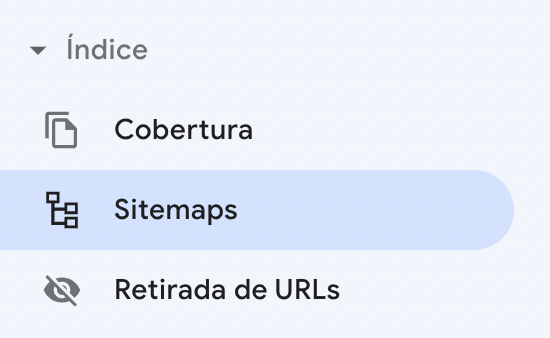Dentro de los muchos elementos que podemos optimizar dentro de una estrategia SEO encontramos el Sitemap.xml. Este archivo puede ayudar a mejorar el posicionamiento web siempre y cuando se utilice bien. Por ello es importante conocer su alcance y qué debemos hacer para optimizarlo.
¿Qué es el Sitemap.xml y para qué sirve?
El Sitemap.xml (que no el mapa del sitio en HTML) es un archivo, que como se aprecia en su extensión, es en formato xml. Este documento tiene como objetivo principal ayudar a Google a entender qué página de una web son las relevantes y por tanto, en las que debe fijarse.
En SEO hablamos de que los “bots” o “arañas” de Google utilizan el Sitemap.xml como uno de los métodos para encontrar páginas que rastrear y analizar, para posteriormente si Google lo considera, incluirlas en el índice (indexar).
Debemos pensar entonces que este archivo debe contener solamente aquellas páginas o URLs que consideramos relevantes, tanto para el negocio como para el SEO. Esas página de la web que queremos que se posicionen o que aparezcan en Google para búsquedas relacionadas con cada una de ellas.
Todo lo contrario, páginas que no aportan nada a efectos SEO y al negocio, no deberían estar listadas. Tampoco aquellas secciones de la web que no queremos que Google posicione. Un claro ejemplo de páginas de este tipo son las de aspectos legales como:
- Políticas de privacidad
- Cookies
- Aviso legal
Tampoco, por ejemplo, áreas privadas a las que se accede mediante contraseña.
El objetivo principal del Sitemap.xml es, por tanto, facilitar el trabajo a Google y priorizar aquellas páginas que son relevantes para nosotros.
¡Conviértete en un SEO experto, esta formación
es para ti!
¿Deben tener todas las webs un Sitemap.xml?
No necesariamente. Esta herramienta se vuelve más relevante en webs muy grandes (cientos de miles de páginas), donde es de vital importancia priorizar lo más importante, ya que Google tiene unos recursos limitados para rastrear nuestra web.
El mapa del sitio XML ayuda, siempre y cuando se utilice bien. Un sitemap.xml mal optimizado puede perjudicar más que ayudar.
El archivo del sitemap es accesible, siempre y cuando se conozca su dirección.
Ésta puede ser directamente /sitemap.xml, o /sitemap_index.xml. Esto dependerá del CMS que se esté utilizando, como WordPress, o bien el nombre del archivo que se haya incluido, sobre todo en casos en los que no se genera un sitemap.xml mediante un plugin.
¿Cómo crear un Sitemap?
Formas de configurar un sitemap.xml hay diferentes, algunas más sencillas y otras más complejas. Por suerte cuando utilizamos un CMS como WordPress, además de algún plugin SEO como Yoast o Rank Math, prácticamente no tenemos que hacer nada.
Cuando tenemos cualquiera de estos dos plugins instalados (hay más, pero estos son muy populares), el sitemap.xml se crea automáticamente. Ahora bien, podemos tener algunas cosas en cuenta para optimizarlo.
Los sitemaps que generan estos plugins tienen la extensión /sitemap_index.xml, por ejemplo la url del sitemap:
tudominio.com/sitemap_index.xml
Y dentro encuentras distintos tipos de sitemaps; para las entradas de blog, páginas y otro tipo de contenidos como pueden ser categorías de blog o de producto, etiquetas, productos de tiendas online, etc.
Los plugins SEO quitan y añaden contenido al Sitemap guiándose por otras configuraciones que nosotros mismos hacemos a través de dichos plugins. Si indicamos que una página, una sección o un tipo de contenido de la web, no queremos que se indexe en Google, se retirará del sitemap.xml, ya que considerará que una página marcada como “noindex” no debería estar el archivo. Y esto es correcto, ya que solo debemos incluir páginas relevantes, las que queremos indexar.
Además, cuando publicamos un contenido nuevo, como una página o una entrada, el sitemap se actualiza añadiendo esa nueva URL. Y cuando eliminamos una página se produce el efecto contrario.
Además de plugins siempre tenemos la opción de crearlos manualmente, aunque esto requiere de conocimientos más avanzados y según qué casos, de herramientas SEO de pago. Algunas de las más comunes y utilizadas para esto son Screaming Frog o xml- sitemaps.com (gratuita límitada).
Generar los sitemaps en una herramienta externa como las mencionadas, nos obliga además a subir el archivo Sitemap.xml manualmente al archivo raíz de la web.
En el caso de que utilicemos otros CMS como Prestashop o sistemas como Shopify, debemos buscar la solución más adecuada en cada caso, normalmente con el sitemap nativo o buscando alternativas más avanzadas en forma de addons o módulos.
Una vez creado, ¿qué más debemos hacer?
Hay algunas acciones muy sencillas de llevar a cabo que conviene hacer con el sitemap.xml.
La primera de ellas sería enviarlo a Google mediante la herramienta Search Console. En esta herramienta gratuita, en la que puedes añadir tu web, tienes la opción de enviar la dirección de tu sitemap.xml para que Google lo tenga en cuenta, además de darte algunas estadísticas basándose en las URLs que le has enviado a través del archivo.
Esto lo puedes hacer desde la opción “Sitemaps” en la barra lateral izquierda.

Si tu sitemap.xml es tudominio.com/sitemap_index.xml tendrás que añadir simplemente “sitemap_index.xml” y pulsar en “Enviar”.

Una vez hecho esto Google procesará el archivo y volverá a actualizarlo cada cierto tiempo, descubriendo nueva información como páginas que se han añadido o se han retirado.
Otra acción que también puedes hacer, aunque en algunos casos los propios plugins también se encargan de hacerlo, es añadir la dirección completa del mapa del sitio al archivo Robots.txt.

Si quieres conocer más sobre este archivo te recomiendo que leas este artículo del propio Google.
Conclusión
El mapa del sitio XML o sitemap.xml es un elemento habitual en el SEO que juega un papel modesto, pero que en muchos casos puede ser mucho más importante. Si tu web es pequeña, apenas unas decenas de URLs, debes preocuparte de que esté optimizado, de que tenga lo relevante y no incluya páginas que no aportan nada al SEO y prefieres que Google no rastree.

